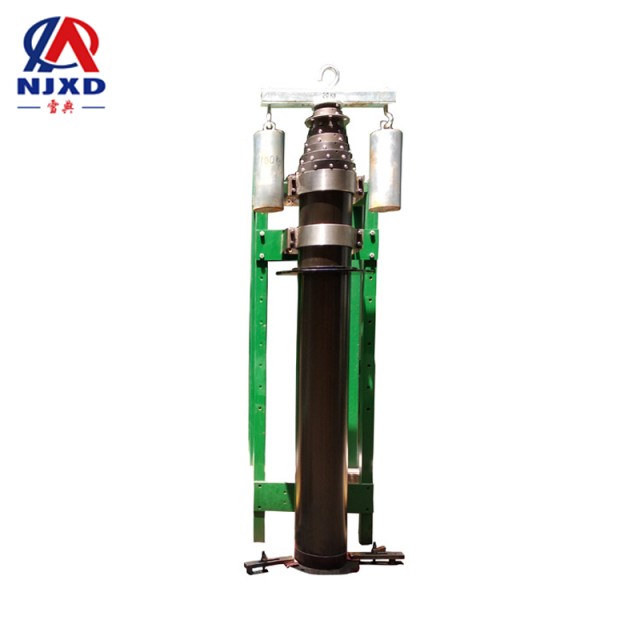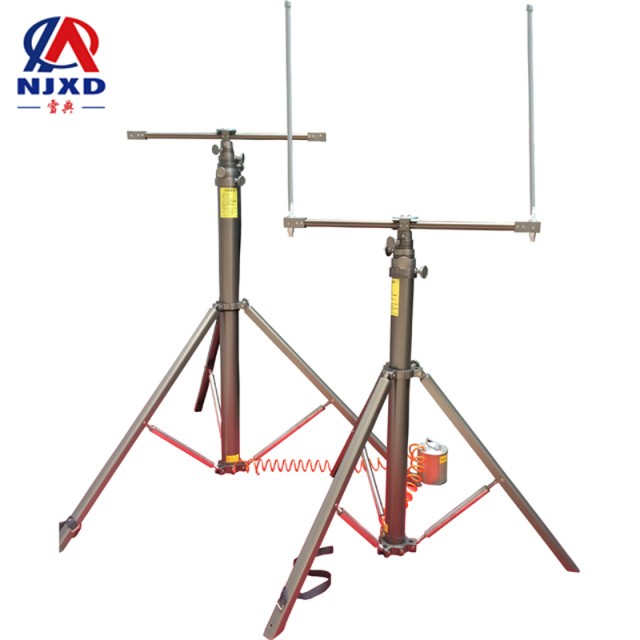NEWS
Lift rod the bearing capacity of the equipment
Time:2021-08-04 View:

Bearing capacity is a concept about force-material or force-structure relationship. When the force action is applied to the exterior of the structure or component, according to certain transmission or transformation logic, stress or strain will appear inside the material or structure. Bearing capacity literally refers to the ability of something to "bear" and "load. Generally refers to the maximum capacity in space or the maximum limit in mechanics. Common carrying capacities include: truck carrying capacity, pillar carrying capacity, switch carrying capacity, website carrying capacity, and power supply carrying capacity.
Definition
For microscopic materials, their physical properties determine that the force (I .e. stress) they can bear has a certain limit. This degree is called the strength of materials, beyond this strength, the material will be damaged; On the other hand, for the structure, due to the effect of stress, the internal structural unit will have corresponding strains, which are systematized as the deformation at each coordinate of the structure according to the structure, similarly, structural deformation also has a limit. This degree is called rigidity. Beyond this rigidity, the structure will deviate from the expected requirements; Moreover, when the deformation of the structure exceeds a certain range, it will cause irreversible changes in the overall geometric structure and bearing system of the structure, which is a kind of compound change, including deformation and stress. This limit is expressed uniformly by stability.

Bearing capacity understanding
In mechanics of materials, the corresponding structural loads corresponding to the strength of materials, stiffness of materials or components, and stability of components are collectively referred to as the bearing capacity of components, but in practical understanding, the following points should be paid attention:
1. The concept of strength is for micro-material units, and the concept of stiffness can be for micro-material (unit or micro-stiffness), and can also be applied to macro-structure, while the stability is for macro-bearing structure.
2. Bearing capacity is the unity of internal material structure and external load of components. External loads are distributed to microscopic material units through the structural way of components, which are shown as stress and strain; Similarly, microscopic strength, strain or stiffness under the action of external force, through the systematic logic of the structure, it is uniformly expressed as the deformation and bearing capacity of the macro structure, that is, the strength, rigidity and stability of the structure.
3. It is precisely because the microscopic material strength-strain characteristics are uniformly expressed as the strength, rigidity and stability of the structure through structure, so the strength, rigidity, stability is collectively referred to as the bearing capacity (of structures or components).
4. Corresponding to the same structure or component, its bearing capacity is the comprehensive unity of strength, rigidity and stability.
Interpretation
Bearing capacity literally refers to the ability of something to "bear" and "load. Generally refers to the maximum capacity in space or the maximum limit in mechanics. Then it extends to the upper limit of various capabilities of various things, units or systems, micro and macro. It can cover exchange capability, throughput capability, processing capability, and damage protection capability.

Analysis content
Basic Assumption
1. Assumption of uniform continuity: assume that the deformed solid is filled with substances without gaps, and the mechanical properties at each point are the same.
2. Isotropy hypothesis: assume that the mechanical properties of deformed solid materials in all directions are the same.
3. Elastic small deformation condition: under the action of load, the component will be deformed. The analysis of the bearing capacity of components mainly studies the problem of small elastic deformation, which is called small elastic deformation. The small elastic deformation is insignificant compared with the original size of the component. When determining the internal force and calculating the stress and deformation of the component, it is analyzed and calculated according to the original size of the component.
Basic content of carrying capacity
1. Strength: the ability of the component to resist damage is called the strength of the component.
2. Stiffness: the ability of the component to resist deformation is called the stiffness of the component.
3. Stability: compression member the ability to maintain its original linear equilibrium state is called the stability of compression member.
The safety, reliability and economy of components are contradictory. The content of component bearing capacity analysis is to select appropriate materials for components and determine reasonable section shape and size on the premise of ensuring that components are safe, reliable and economical, provide necessary theoretical basis and practical calculation methods.
Basic form of deformation
There are many kinds of components in Engineering Practice. According to its geometric shape, it can be simplified into four types: Rod, plate, Shell and block.
Under the action of load, the basic deformation forms of equal straight rod include:
1. Axial tension and compression deformation;
2. Shear deformation;
3. Torsion and deformation;
4. Bending deformation.
The combination of two or more kinds of basic deformation is called combination deformation.

Influencing factors
1. Influence of Foundation shape: when calculating the bearing capacity of foundation with the theoretical formula of ultimate load, it is considered according to the strip Foundation, and the influence of different shapes of foundation bearing should be considered for non-strip Foundation.
2. The influence of load inclination and eccentricity: when calculating the bearing capacity of foundation with theoretical formula, it is considered by the Center load, however, the eccentric inclination of the load has an influence on the bearing capacity of the Foundation.
3. Influence of shear strength of overburden: the higher the shear strength of overburden above the base, the higher the bearing capacity of foundation obviously. Therefore, the size of foundation pit excavation and the quality of construction backfilling have influence on the bearing capacity of foundation.
4. Influence of groundwater: the rise of groundwater level will reduce the bearing capacity of soil.
5. Influence of lower lying layer: determine the design value of bearing capacity of foundation bearing layer, and make specific analysis and checking calculation on the influence of lower lying layer.
6. In addition, there is also the influence of base inclination and ground inclination: the influence of foundation soil compressibility and the ratio of Test floor to actual base size. The influence of adjacent Foundation, the influence of loading rate and the joint action of foundation and superstructure, etc.

Vertical bearing and horizontal bearing
Bearing capacity is divided into vertical bearing capacity and horizontal bearing capacity. The vertical bearing capacity should first collect the load on the board, then distribute it to the beam, and then distribute the load of the beam to the column. The load including static load and dynamic load should be checked according to the corresponding load code, and the dead weight of beam and slab columns should also be included. The horizontal load requires the rigidity of the structure, which is distributed according to the rigidity according to the horizontal load such as seismic force load and wind load.
Horizontal bearing capacity
When the platform is set horizontally, the load will be applied to the center of the table, and the ultimate load that the platform can bear is the horizontal bearing capacity.
(This is the limit load that can guarantee accuracy.)
Note: the load size varies depending on the setting state and also depends on the customer's usage conditions.
